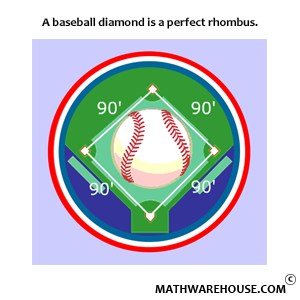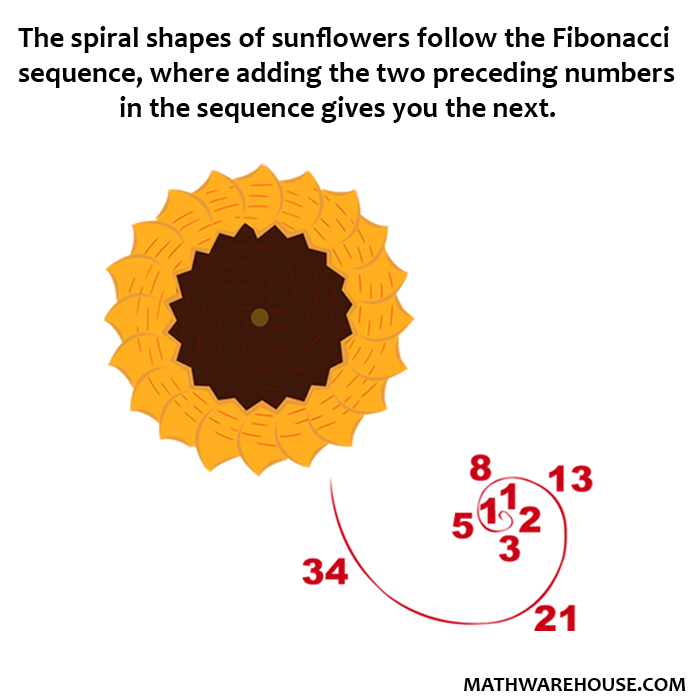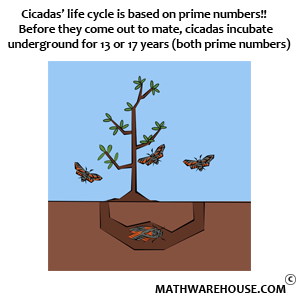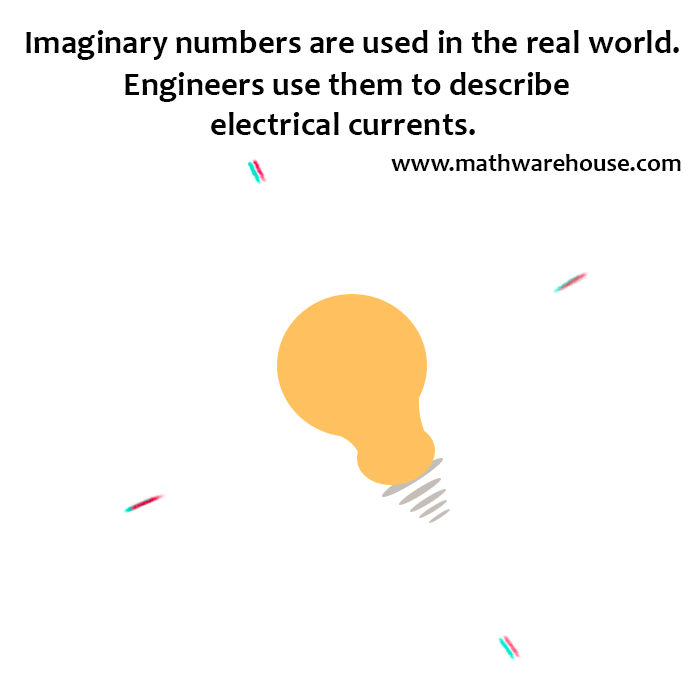Quick Overview
infinite limits - when limits don't exist because the function becomes infinitely large- Infinite limit can only occur when the limit has the form $$\frac n 0$$ for $$n\neq0$$
- Need to examine the one-sided limits.
Examples
Example 1
Evaluate $$\displaystyle \lim_{x\to 3}\,\frac{x+2}{x-3}$$
Determine the form of the limit.
$$ \displaystyle\lim_{x\to 3}\,\frac{x+2}{x-3} = \frac{3 + 2}{3-3} = \frac 5 0 $$
The limit does not exist, but it has the necessary form so that it might be an infinite limit.
Examine the left-hand limit.
- The numerator approaches 5, so it will be positive.
- Since $$x$$ is approaching 3 from the left, the denominator will be negative.
- As the denominator shrinks to 0, the function becomes infinitely large.
Result: $$\displaystyle \lim_{x\to3^-}\,\frac{x+2}{x+3} = -\infty$$
Examine the right-hand limit.
- The numerator approaches 5, so it will be positive.
- Since $$x$$ is approaching 3 from the right, the denominator will be positive.
- As the denominator shrinks to 0, the function becomes infinitely large.
Result: $$\displaystyle \lim_{x\to3^+}\,\frac{x+2}{x+3} = \infty$$
$$\displaystyle \lim_{x\to 3}\,\frac{x+2}{x-3}$$ does not exist.
Example 2
Evaluate: $$\displaystyle \lim_{x\to-2}\,\frac{x^2-5}{x^2+4x+4}$$
Determine the form of the limit.
$$ \\ \displaystyle\lim_{x\to-2}\,\frac{x^2-5}{x^2+4x+4} % = \frac{(-2)^2-5}{(-2)^2+4(-2)+4} % = \frac{-1} 0 \\ $$
The limit doesn't exist, but it has the $$\frac n 0$$ form so it might be an infinite limit.
Try factoring the denominator so the one-sided limits are easier to analyze.
$$ \displaystyle\lim_{x\to-2}\,\frac{x^2-5}{x^2+4x+4} % = \displaystyle\lim_{x\to-2}\,\frac{x^2-5}{(x+2)^2} $$
Examine the one-sided limits.
- In both cases, the numerator approaches -1, so the numerator will be negative.
- In both cases, the denominator is being squared, so it will always be positive.
- In both cases, the denominator is approaching 0, so the function will become infinitely large.
Both one-sided limits grow infinitely large in the negative direction.
$$\displaystyle \lim_{x\to-2}\, \frac{x^2-5}{x^2+4x+4} = -\infty$$
Example 3
Evaluate: $$\displaystyle \lim_{x\to 4}\,\frac{x^2-16}{x^2-8x+16}$$
Determine the form of the limit.
$$ \displaystyle\lim_{x\to 4} \frac{x^2-16}{x^2-8x+16} % = \frac{(4)^2-16}{x^2-8(4)+16} % = \frac 0 0 $$
Find and divide out any common factors.
$$ \\ \begin{align*} \displaystyle\lim_{x\to 4}\,\frac{x^2-16}{x^2-8x+16} % & = \displaystyle\lim_{x\to 4}\,\frac{(x-4)(x+4)}{(x-4)^2}\\[6pt] % & = \displaystyle\lim_{x\to 4}\,\frac{x+4}{x-4} \end{align*} \\ $$
Evaluate the simpler limit.
$$ \displaystyle\lim_{x\to 4}\,\frac{x+4}{x-4} = \frac 8 0 $$
We know the limit doesn't exist. Since it has the $$\frac n 0$$ form, it might be an infinite limit.
Examine the left-hand limit.
- The numerator approaches 8, so it will be positive.
- Since $$x$$ is approaching 4 from the left, the denominator will be negative.
- As the denominator shrinks to 0, the function will become infinitely large.
So, $$\displaystyle \lim_{x\to 4^-}\,\frac{x+4}{x-4} = -\infty$$
Examine the right-hand limit.
- The numerator approaches 8, so it is positive.
- Since $$x$$ is approaching 4 from the right, the denominator will be positive.
- As the denominator shrinks to 0, the function will become infinitely large.
So, $$\displaystyle \lim_{x\to 4^+}\,\frac{x+4}{x-4} = \infty$$
$$\displaystyle \lim_{x\to 4}\, \frac{x^2-16}{x^2-8x+16}$$ does not exist.
Example 4
Evaluate: $$\displaystyle \lim_{x\to 5}\,\frac{3x^2+4x}{x^2 - 25}$$
Examine the left-hand limit.
- The numerator approaches 95, so it will be positive.
- Since $$x$$ is approaching 5 from the left, we know $$x<5$$. This means $$x^2 < 25$$. So the denominator will be negative.
- The denominator is headed to zero, so the function will become infinitely large.
Taken all together, these statements mean
$$\\ \displaystyle \lim_{x\to5^-}\,\frac{3x^2+4x}{x^2-5} = -\infty \\$$
Examine the right-hand limit.
- The numerator approaches 95, so it will be positive.
- Since $$x$$ is approaching 5 from the right, we know $$x>5$$. This means $$x^2> 25$$. So the denominator will be positive.
- The denominator is headed to zero, so the function will become infinitely large.
Taken all together, these statements mean
$$\displaystyle \lim_{x\to 5^+}\,\frac{3x^2+4x}{x^2-5} = \infty$$
$$\\ \displaystyle \lim_{x\to 5}\, \frac{3x^2+4x}{x^2 - 25} \\$$ does not exist.
Practice Problems
Determine the form of the limit.
$$ \displaystyle \lim_{x\to-3}\,\frac{x-5}{x+3} % = \frac{-3-5}{-3+3} % = \frac{-8} 0 $$
The limit doesn't exist, but it might be an infinite limit.
Examine the left-hand limit.
- The numerator approaches -8, so it will be negative.
- Since $$x$$ is approaching -3 from the left, the denominator will be negative.
- As the denominator approaches zero, the function will become infinitely large.
Taken all together, the statements tell us
$$\displaystyle \lim_{x\to-3^-}\,\frac{x-5}{x+3} = \infty$$
Examine the right-hand limit.
- The numerator approaches -8, so it will be negative.
- Since $$x$$ is approaching -3 from the right, the denominator will be positive.
- As the denominator approaches zero, the function will become infinitely large.
Taken all together, these statements mean
$$\displaystyle \lim_{x\to-3^+}\,\frac{x-5}{x+3} = -\infty$$
$$\displaystyle \lim_{x\to-3}\, \frac{x-5}{x+3}$$ does not exist.
Determine the form of the limit.
$$ \displaystyle \lim_{x\to1}\,\frac{x^2+4x+3}{x-1} % = \frac{(1)^2+4(1)+3}{1-1} % = \frac 8 0 $$
The limit doesn't exist, but it has the right form so it might be an infinite limit.
Examine the left-hand limit.
- The numerator approaches 8, so it will be positive.
- Since $$x$$ is approaching 1 from the left, the denominator will be negative.
- As the denominator approaches zero, the function will become infinitely large.
Taken all together, these statements mean
$$\displaystyle \lim_{x\to1^-}\,\frac{x^2+4x+3}{x-1} = -\infty$$
Examine the right-hand limit .
- The numerator approaches 8, so it will be positive.
- Since $$x$$ is approaching 1 from the right, the denominator will be positive.
- As the denominator approaches zero, the function will become infinitely large.
Taken all together, these statements mean
$$\displaystyle \lim_{x\to1^+}\,\frac{x^2+4x+3}{x-1} = \infty$$
$$\displaystyle \lim_{x\to1^+}\, \frac{x^2+4x+3}{x-1}$$ does not exist.
Determine the form of the limit.
$$ \displaystyle\lim_{x\to7}\,\frac{x^2-4}{(x-7)^2} % = \frac{(7)^2-4}{(7-7)^2} % = \frac{45} 0 $$
The limit does not exist. However, it has the correct form so it might be an infinite limit.
Examine the one-sided limits.
In both cases,
- The numerator approaches 45, so it will be positive.
- The denominator is being squared, so it will always be positive.
- As the denominator approaches zero, the function will become infinitely large.
Take all together, these statements mean both one-sided limits are infinite in the positive direction.
$$ \displaystyle \lim_{x\to7}\,\frac{x^2-4}{(x-7)^2} = \infty $$
Determine the form of the limit.
$$ \displaystyle\lim_{x\to\frac 1 2}\,\frac{6x-9}{4x^2-4x+1} % = \frac{6\left(\frac 1 2\right)-9}{4\left(\frac 1 2\right)^2-4\left(\frac 1 2\right)+1} % = \frac{-6}{4(1/4) - 2 + 1} % = \frac{-6} 0 $$
The limit does not exist. However, it has the correct form so it might be an infinite limit.
Factor the denominator so it is easier to analyze.
$$ \displaystyle\lim_{x\to\frac 1 2}\,\frac{6x-9}{4x^2-4x+1} % = \displaystyle\lim_{x\to\frac 1 2}\,\frac{6x-9}{(2x-1)^2} $$
Examine the one-sided limits.
- The numerator approaches -6, so it will be negative.
- The denominator is a perfect square, so as $$x$$ approaches $$\frac 1 2$$, the denominator will always be positive.
- As the denominator approaches 0, the function will become infinitely large.
Taken all together, these statements tell us that both one-sided limits are infinite in the negative direction.
$$ \displaystyle \lim_{x\to\frac 1 2}\, \frac{6x-9}{4x^2-4x+1} = -\infty $$.
Determine the form of the limit.
$$ \displaystyle\lim_{x\to 8}\,\frac{x^2-7x-8}{(x-8)^2} % = \frac{(8)^2 - 7(8) - 8}{(8-8)^2} % = \frac{64 - 56 - 8}{0} % = \frac 0 0 $$
Find and divide out any common factors.
$$ \displaystyle\lim_{x\to 8}\,\frac{x^2-7x-8}{(x-8)^2} % = \displaystyle\lim_{x\to 8}\,\frac{(x-8)(x+1)}{(x-8)^2} % = \displaystyle\lim_{x\to 8}\,\frac{x+1}{x-8} $$
Evaluate the simpler limit.
$$ \displaystyle\lim_{x\to 8}\,\frac{x+1}{x-8} % = \frac{8+1}{8-8} % = \frac 9 0 $$
The limits doesn't exist, but it does have the correct form so it might be an infinite limit.
Examine the limit from the left.
- The numerator approaches 9, so it is positive.
- Since $$x$$ is approaching 8 from the left, the denominator is negative.
- As the denominator approaches zero, the function becomes infinitely large.
Taken all together, these statements mean
$$\displaystyle \lim_{x\to8^-}\,\frac{x+1}{x-8} = -\infty$$
Examine the right from the right.
- The numerator approaches 9, so it will be positive.
- Since $$x$$ is approaching 8 from the right, the denominator is positive.
- As the denominator approaches zero, the function becomes infinitely large.
Taken together, these statements mean
$$\displaystyle \lim_{x\to8^+}\,\frac{x+1}{x-8} = \infty$$
$$ \displaystyle \lim_{x\to 8}\, \frac{x^2-7x-8}{(x-8)^2} $$ does not exist.
Determine the form of the limit.
$$ \displaystyle \lim_{x\to -\frac 3 2}\,\frac{8x^2+14x+3}{4x^2 + 12x + 9} % = \frac{8\left(-\frac 3 2\right)^2+14\left(-\frac 3 2\right)+3}{4\left(-\frac 3 2\right)^2 + 12\left(-\frac 3 2\right) + 9} % = \frac{18-21+3}{9 - 18 + 9} % = \frac 0 0 $$
Find and divide out any common factors.
$$ \displaystyle \lim_{x\to -\frac 3 2}\,\frac{8x^2+14x+3}{4x^2 + 12x + 9} % = \displaystyle \lim_{x\to -\frac 3 2}\,\frac{(2x+3)(4x+1) }{(2x+3)^2} % = \displaystyle \lim_{x\to -\frac 3 2}\,\frac{4x+1}{2x+3} $$
Evaluate the simpler limit.
$$ \displaystyle \lim_{x\to -\frac 3 2}\,\frac{4x+1}{2x+3} % = \frac{4\left(-\frac 3 2\right) + 1}{2\left(-\frac 3 2\right) + 3} % = \frac{-6+1}{-3+3} % = \frac{-5} 0 $$.
The limit does not exist, but it has the correct form so that it might be an infinite limit.
Examine the limit from the left.
- The numerator approaches -5, so it will be negative.
- Since $$x$$ is approaching $$-\frac 3 2$$ from the left, the denominator will be negative.
- As the denominator approaches zero, the function will become infinitely large.
Taken together, these statements mean
$$\displaystyle \,\lim_{x\to-\frac{3}{2}^-} \frac{4x+1}{2x+3} = \infty$$
Examine the limit from the right.
- The numerator approaches -5, so it will be negative.
- Since $$x$$ is approaching $$-\frac 3 2$$ from the right, the denominator will be positive.
- As the denominator approaches zero, the function will become infinitely large.
Taken together, these statements mean
$$\displaystyle \,\lim_{x\to-\frac{3}{2}^+} \frac{4x+1}{2x+3} = -\infty$$
$$ \displaystyle \lim_{x\to -\frac 3 2}\,\frac{8x^2+14x+3}{4x^2 + 12x + 9} $$ does not exist
Determine the form of the limit.
$$ \displaystyle \lim_{x\to 2}\,\frac{2x^2-14}{x^2-4} % = \frac{2(2)^2 - 14}{(2)^2-4} % = \frac{-6}{0} $$
The limit doesn't exist, but it has the correct form so it might be an infinite limit.
Examine the left-hand limit.
- The numerator approaches -6, so it will be negative.
- Since $$x$$ is approaching 2 from the left, we know $$x<2$$ so $$x^2 < 4$$. This means the denominator will be negative.
- As the denominator approaches zero, the function will become infinitely large.
Taken together, these statements tell us
$$\\ \displaystyle \lim_{x\to2^-}\, \frac{2x^2-14}{x^2-4} = \infty \\$$
Examine the right-hand limit.
- The numerator approaches -6, so it will be negative.
- Since $$x$$ is approaching 2 from the right, we know $$x>2$$ so $$x^2 > 4$$. This means the denominator will be positve.
- As the denominator approaches zero, the function will become infinitely large.
Taken together, these statements tell us
$$\displaystyle \lim_{x\to2^+}\, \frac{2x^2-14}{x^2-4} = -\infty$$
$$ \\ \displaystyle \lim_{x\to 2} \,\frac{2x^2-14}{x^2-4} \\ $$ does not exist.
Determine the form of the limit.
$$ \displaystyle \lim_{x\to 6}\,\frac{x^2 - 5x - 36}{x^2-36} % = \frac{(6)^2 - 5(6) - 36}{(6)^2-36} % = \frac{- 30}{0} $$
The limit does not exist, but it does have the correct form so it might be an infinite limit.
Examine the left-hand limit.
- The numerator approaches -30, so it will be negative.
- Since x is approaching 6 from the left, we know $$x<6$$, so $$x^2 < 36$$, so the denominator will be negative.
- As the denominator approaches zero, the function will become infinitely large.
These statements mean
$$\displaystyle \lim_{x\to 6^-}\, \frac{x^2 - 5x - 36}{x^2-36} = \infty$$
Examine the right-hand limit.
- The numerator approaches $$-30$$, so it will be negative.
- As $$x$$ approaches 6 from the right, we know $$x>6$$, so $$x^2 > 36$$, so the denominator will be positive.
- As the denominator approaches zero, the function will become infinitely large.
These statements indicate
$$\displaystyle \lim_{x\to 6^+}\, \frac{x^2 - 5x - 36}{x^2-36} = -\infty$$
$$\displaystyle \lim_{x\to 6}\, \frac{x^2 - 5x - 36}{x^2-36}$$ does not exist.


















